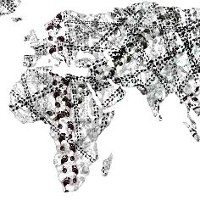Quantifying Migration Scenarios for Better Policy
Funded by the European Union’s Horizon 2020 funding scheme, this three-year project coordinated by Dr Jakub Bijak from University of Southampton consists of 7 partners from 5 European countries and involves experts from the areas of demography and economy.
Patrick Sabourin and Guillaume Marois are the IIASA partners in this project. Both researchers have in recent years developed a microsimulation model in the framework of the IIASA-JRC Centre of Expertise on Population and Migration (CEPAM). The work of CEPAM will have synergies with the microsimulations and dissemination activities in this project. The migration scenarios will complement those based on age, gender and education developed within the new JRC-IIASA CEPAM initiative.
The objective of QuantMig is to produce comprehensive, multi-perspective and robust quantitative migration scenarios to support many different areas of European migration policy. The project will advance the methodology of scenario generation whilst being firmly grounded in the cutting-edge developments in conceptualizing, explaining, estimating and forecasting migration.
In particular, the project will further the understanding of qualitative and conceptual foundations of migration flows into, out of and within Europe, and their key drivers from the point of view of origin, destination and transit countries. Particular focus will be on mobility of third-country nationals and decision-making of migrants. The scenarios will be based on a bespoke set of statistical estimates derived from a distinctive and comprehensive set of harmonised data on migration and its drivers. Rigorous and innovative methods will be developed and applied to creating interactive simulation models, describing scenario uncertainty, and providing early warnings.
The unique features of QuantMig include building a comprehensive knowledge base on migration flows and their drivers, far beyond the state of the art. The strong quantitative slant of the project will also improve migration data and analytical methods, together with innovative assessment of their quality and uncertainty, in line with the current European policy priorities. The project remains fully relevant to the work programme, addressing all specific areas of the call.
Put together by a unique consortium of leading European institutions with excellence in demography and migration, in continuous dialogue with key users and stakeholders, QuantMig will deliver a range of directly applicable tools for policy support. The project outputs: open data and models, accessible interactive tools and visualizations, and a range of simulations for migration policy and planning, will ensure significant impact and a lasting legacy of the project.
Research Partners in this Project
University of Southampton (SOTON), United Kingdom, Coordinator
Donau Universitaet Krems, Austria
Max Planck Institute for Demographic Research (MPIDR), Germany
Nederlands Interdisciplinair Demografisch Instituut (NIDI), Netherlands
Peace Research Institute Oslo (PRIO), Norway
University of Oslo, Norway

This project has received funding from the European Union’s Horizon 2020 research and innovation program under grant agreement No 870299. Project Name: Quantifying Migration Scenarios for Better Policy, QuantMig.

Timeframe
01.02.2020 - 31.01.2023
PUBLICATIONS
RESEARCH PARTNERS
IIASA-JRC Centre of Expertise on Population and Migration


